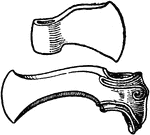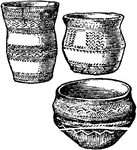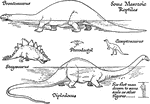
Mesozoic Age Reptiles
Some Mesozoic reptiles. Shown are the Brontosaurus, Stegosaurus, Pterodactyl, Camptosaurus, and the…
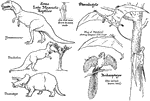
Late Mesozoic Age Reptiles
Some Late Mesozoic reptiles. Shown are the Tyrannosaurus, Trachodon, Triceratops, Pterodactyls, and…

Mammals from the Oligocene Mammals
Mammals from the Oligocene age. Shown are the Titanothere, Entelodont, Hyracodon, Uintathere, and the…

Neolithic Implements Stone Tranchet
Stone tranchet Neolithic age implement used for cutting. Not drawn to scale.

Neolithic Implements Stone and Horn Ax and Hammer
Stone and horn ax and hammer. A Neolithic age implement. Not drawn to scale.

Neolithic Implements Stone Mallets
Stone mallets and the North American Indian method of mounting. A Neolithic age implement. Not drawn…

Neolithic Implements Axe-hammers
Axe-hammers of polished stone. A Neolithic age implement. Not drawn to scale.

Neolithic Implements Flint Arrowheads
Flint arrow heads. A Neolithic age implement. Not drawn to scale.

Neolithic Age Hut Urns
Neolithic age hut urns. The first drawing probably representing a lake dwelling. Not drawn to scale.

Bronze Age Swords
Three swords from the Bronze age, each with different handles. Not drawn to scale.

Dodder on Golden Rod
"Dodder growing upon a Golden-Rod Stem. s, seedling dodder plants, growing in earth; h, stem of host;…

Onion Leaf
"Longitudinal section of an onion leaf. sca, thickened base of leaf, forming a bulb-scale; s, thin sheath…
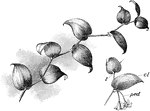
Smilax
"Stem of "Smilax" (Myrsiphyllum). l, scale-like leaves; cl, cladophyll, or leaf-like branch, growing…
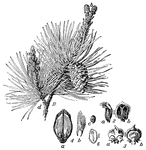
Scotch Pine
"Scotch Pine (P. slvestris). 1, a twig showing: a, staminate catkins; b, pistillate catkins; c, a cone;…

Rain Gauge
An instrument used to measure the quantity of a rain which falls at a given place. They are which falls…
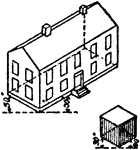
Construction Using Isometric Perspective
An illustration showing how to use isometric perspective. "This kind of perspective admits of scale…

Addition Scale
A balance scale holding 5 pounds on the left and 3 and 2 pound weights on the right showing 3+2=5.
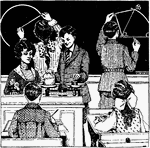
Geometry
Two students drawing geometrical shapes on the chalkboard. A student is also using a scale while students…
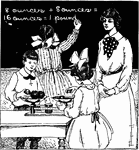
Weighing Apples
A teacher watches a group of students weighing apples and writing out measurement problems on the chalkboard.
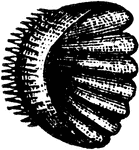
Ctenoid, Scale
Fishes are sometimes classed, in accordance with the structure of their scale, into Ctenoid, Ganoid,…
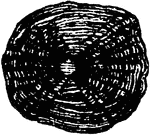
Cycloid Scale of the Carp
Fishes are sometimes classed, in accordance with the structure of their scale, into Ctenoid, Ganoid,…
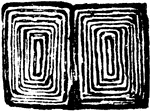
Ganoid Scales of Dipterus
Fishes are sometimes classed, in accordance with the structure of their scale, into Ctenoid, Ganoid,…
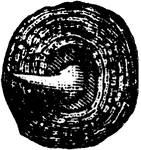
Placoid Scale of Ray
Fishes are sometimes classed, in accordance with the structure of their scale, into Ctenoid, Ganoid,…
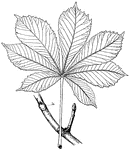
Horse-Chestnut Leaf
"Horse-chestnut (Aesculus Hippocastanum). ls, leaf-scar, showing scars of seven fibro-vascular bundles,…

Magnified Surface of a Hair
The hair is produced by a peculiar growth and modification of the epidermis. Externally it is covered…
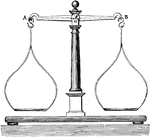
Balance
In the common balance there is a stiff piece of metal called the beam, which turns about the sharp edge…

Microscopic view of a fermented apple
"Portions of the rotting pulp were placed on a microscopic slide, divided into hundredths and thousandths…
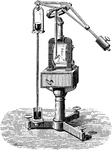
Counterpoised Barometer
If the barometric tube is suspended from one of the scales of a balance, there will be required to balance…

Mediterranean Cyprus
"Cupressus sempervirens; 1. a scale of a male cone with pollen; 2. a scale of a female cone with naked…

Prince Albert's Yew
"Saxe-Gothea conspicua; 1. male spike; 2. anther; 3. scale of galbulus with ovule; 4. ripe galbulus."…
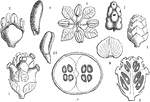
Turtleweed
"Batis maritima. 1. a male cone; 2. a male flower; 3. the same forced open to show the petals; 4. on…
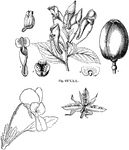
Violet
"Corynostylis Hybanthus. 1. a set of stamens, each having the connective lengthened beyond the anther,…
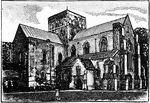
Holy Cross Church, Near Winchester
The Hospital of St. Cross is a medieval almshouse in Winchester, England, founded between 1133 and 1136…
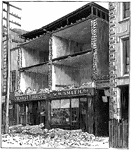
Results of the Earthquake in Charleston S.C., Aug. 31, 1886
On August 31, 1886, Charleston was nearly destroyed by an earthquake measuring 7.5 on the Richter scale…
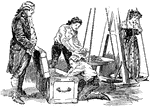
Grandfather's Chair
A scene from Hawthorne's "Grandfather's Chair." A young girl is on a large scale, being weighed for…
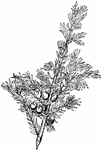
Juniper
Junipers are coniferous plants in the genus Juniperus of the cypress family Cupressaceae. Depending…

Vera Cruz during the Mexican War
The Battle of Veracruz was a 20-day siege of the key Mexican seaport of Veracruz, during the Mexican-American…

Scaled Leaves
A variety of leaves with scales: "a, the scale-like leaves of the stem of Lathraea squamaria (toothwort);…

Cochineal
An illustration of Cochineal living on cactus. Cochineal is the name of both crimson or carmine dye…
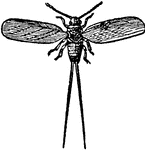
Cochineal (Male)
An illustration of a male Cochineal. Cochineal is the name of both crimson or carmine dye and the cochineal…

Cochineal (Female)
An illustration of a female Cochineal. Cochineal is the name of both crimson or carmine dye and the…

Butterfly Scale
"Scales from wing of butterfly (Vanessa antiopa), highly magnified. 1, from border of anterior wing,…

Butterfly Scale
"Scales from wing of butterfly (Vanessa antiopa), highly magnified. 2, from border of anterior wing,…
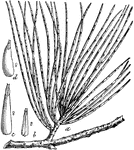
Pine Needle Scale
"a, Scales of Chionaspis pinifoliae upon pine-leaves, natural size; b, scale of male, enlarged; c, straight…
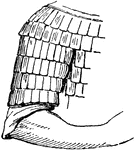
Scale Armor
Small plates are sewn onto cloth, overlapping. "Scale-armor of the Early Middle Ages." -Whitney, 1911
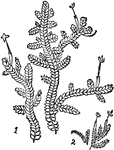
Liverworts
"Scale-mosses. 1, Ptilidium ciliare (fringewort); 2, Lophocolea minor (liverwort)." -Whitney, 1911
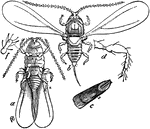
Scale Insect
"Scale-insect. Oyster-shell bark-louse of the apple (Mytilaspis pomorum); male. a, ventral view with…

Curlygrass Fern
Schizaea pusilla, or Little Curlygrass Fern is a small species of fern in the Curlygrass family (Schizaeaceae).…
![Irvin McDowell (October 15, 1818 – May 4, 1885)[1] was a career American army officer, famous for his defeat during the First Battle of Bull Run, the first large-scale battle of the American Civil War.](https://etc.usf.edu/clipart/57400/57417/57417_mcdowell_irv_mth.gif)
Irvin McDowell
Irvin McDowell (October 15, 1818 – May 4, 1885)[1] was a career American army officer, famous…

